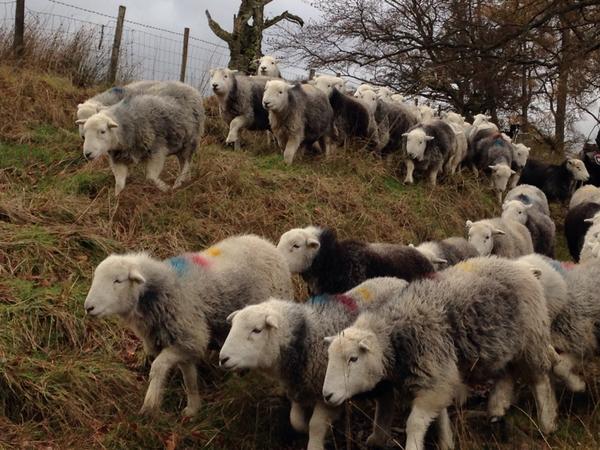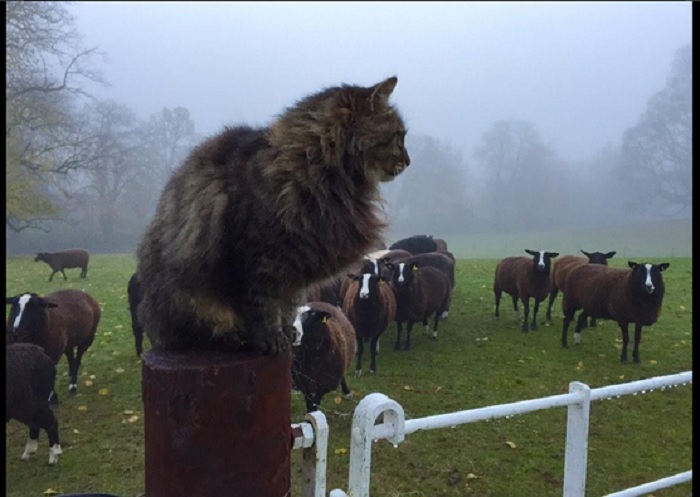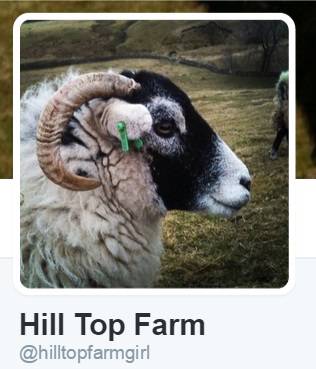As well as here you can find Team WOVEMBER on Facebook and Twitter and on Ravelry. Louise looks at how the world of wool operates in social media and introduces us to some of her favourite Tweeters!
Who can remember the times before social media? Although find it odd that things like cassette tapes and dial telephones are museum pieces items for generations today, I cannot deny that social media has changed my (woolly) life and I fully embrace its wondrousness.
My chosen social media channel is Twitter, and very recently Instagram. I do not subscribe to the ‘Book of Face’ as what I love about Twitter and IG is that they are quick. short bursts of interactions which fire off info very widely. Instead of being what could seem (from my description) throwaway snippets of information – although I am guilty of the “look at my cat” tweets – in 140 characters one can learn a lot.
The fact that so many people involved with wool work tweet means that their world is opened up to us in a way that is unique. Whether it is a daily photograph, with little text, or a series of tweets following the shepherding day, the followers of these accounts gain real insight into to the work that goes into the sheep who provide our wool and the landscape they live in.
Herdwick Shepherd, AKA @herdyshepherd1, chooses to remain an anonymous tweeter; rather he is a narrator on farming life in his wonderful landscape. With smart phone on hand @herdyshepherd1 produces stunning photography, often throughout his working day and tweets about traditional farming methods, the shepherding year, the economic drawbacks of farming and often being at odds with nature and the landscape…such as tweets about the Herdwicks being buried in the snow during extreme weather conditions.

Apart from his photography and his firm-held views on farming he also has a great humour and that makes a @HerdyShepherd1 tweet in your timeline a very welcome one! @HerdyShepherd has written about why he likes the medium of twitter: it’s brevity and wide transmission;
Twitter gives you an amplifier for your voice (albeit not necessarily an audience if you are tedious, and let’s face it: lots of people are). It cuts out the middleman (I don’t need you to interpret and translate my life and my work for other people – sorry journalists but I’m a shepherd not an idiot). It lets you find your niche (and that niche can be massive). It lets you sell things (we sell sheep, wool and visits to our farm on Twitter). And it lets you connect with weirdly interesting other people (widening your sphere of influence through collaborations with artists or writers).
Taken from The Atlantic, Nov 2013
What I personally love about twitter is that it is brief. You could feel quite limited by 140 characters, but I think I have had some of the best interactions, conversations and learned more from those 140 characters. It also gives a voice to those who are working in areas where there was no public voice before and from following these accounts we find such interest and depth of knowledge: in these short flashes of detail we find we learn something new and appreciate a way of life that we perhaps did not appreciate before.
High in the Yorkshire Dales, with 2,000 acres, surrounded by 1,000 strong Swaledale flock and seven children you would think twitter would be the last thing on the mind of Amanda Owen, Aka Yorkshire Shepherdess (@AmandaOwen8). Life at Ravenseat farm revolves around her family and her flock and Amanda’s photography, which accompanies her tweets, show that life in often intimate portrait. Unafraid to show the harsher realities of farming too, you will find every aspect of the shepherding life in Amanda’s tweets.
Also tweeting from Yorkshire, this time Malham, @HillTopFarmGirl keeps Swaledales too, in addition to black Wensleydales, BFL and also pedigree belted Galloway cattle.
@ZwartblesIE is Zwartbles farmer Suzanna who shares on social media life with her friendly Dutch breed sheep. She also designs wool blankets which use 100% wool from her flock. Suzanna’s farm is also home to some sheep-guarding alpaca and Cat Shepherd, @1catshepherd, whose own twitter account deserves a follow for a very humourous cat’s eye view of farm life.

Whether it’s a daily dose of photographs, brief snapshot of the the shepherding day or deeper insights into farming and agriculture it brings wool work from a grass-roots level deeper into our consciousness. This is not only of farming, but of the journey wool then takes.
Wool merchant Martin Curtis (@curtthesheep) recently wrote, for Countryside Online, of how in wool processing and trading there may not be a whole lot to tweet to one-another in the industry about, but he is astounded to find how interested people have become every part of the process wool goes through to become the finished item.
Indeed, there are many mills who are also in my twitter timeline whose content offers fascinating glimpses into how fleece becomes our favourite yarn: take John Arbon (@jarbontextiles) who tweets from his North Devonshire mill, when this video appeared on my twitter timeline a couple of months ago I was absolutely enthralled to see – up close and personal – everything involved with a day at the mill.
[youtube https://www.youtube.com/watch?v=tFa7C4cVKQo]Social media doesn’t just give a voice – with a loud hailer, at that – but it can open eyes, not only adding to deeper appreciation of the wool we craft with, but the people who start that wool on it’s journey and beyond.
Daily bleaters. Do keep tweeting on.


